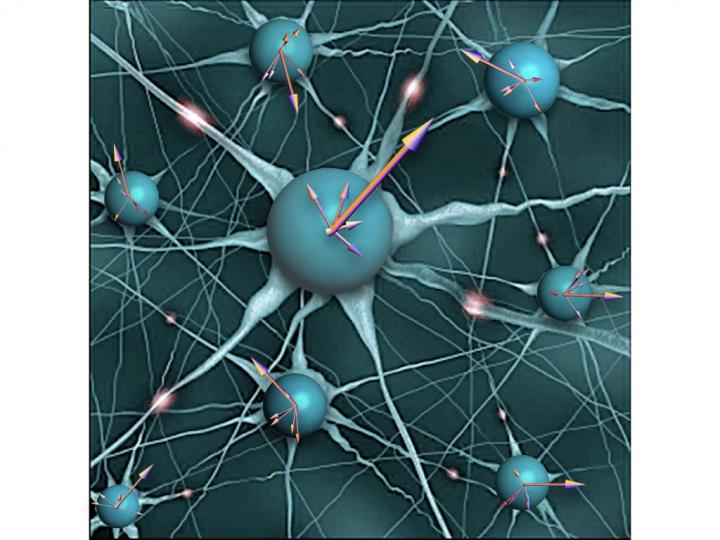
Credit: Gleb Berloff
An important class of challenging computational problems, with applications in graph theory, neural networks, artificial intelligence and error-correcting codes can be solved by multiplying light signals, according to researchers from the University of Cambridge and Skolkovo Institute of Science and Technology in Russia.
In a paper published in the journal Physical Review Letters, they propose a new type of computation that could revolutionise analogue computing by dramatically reducing the number of light signals needed while simplifying the search for the best mathematical solutions, allowing for ultra-fast optical computers.
Optical or photonic computing uses photons produced by lasers or diodes for computation, as opposed to classical computers which use electrons. Since photons are essentially without mass and can travel faster than electrons, an optical computer would be superfast, energy-efficient and able to process information simultaneously through multiple temporal or spatial optical channels.
The computing element in an optical computer – an alternative to the ones and zeroes of a digital computer – is represented by the continuous phase of the light signal, and the computation is normally achieved by adding two light waves coming from two different sources and then projecting the result onto ‘0’ or ‘1’ states.
However, real life presents highly nonlinear problems, where multiple unknowns simultaneously change the values of other unknowns while interacting multiplicatively. In this case, the traditional approach to optical computing that combines light waves in a linear manner fails.
Now, Professor Natalia Berloff from Cambridge’s Department of Applied Mathematics and Theoretical Physics and PhD student Nikita Stroev from Skolkovo Institute of Science and Technology have found that optical systems can combine light by multiplying the wave functions describing the light waves instead of adding them and may represent a different type of connections between the light waves.
They illustrated this phenomenon with quasi-particles called polaritons – which are half-light and half-matter – while extending the idea to a larger class of optical systems such as light pulses in a fibre. Tiny pulses or blobs of coherent, superfast-moving polaritons can be created in space and overlap with one another in a nonlinear way, due to the matter component of polaritons.
“We found the key ingredient is how you couple the pulses with each other,” said Stroev. “If you get the coupling and light intensity right, the light multiplies, affecting the phases of the individual pulses, giving away the answer to the problem. This makes it possible to use light to solve nonlinear problems.”
The multiplication of the wave functions to determine the phase of the light signal in each element of these optical systems comes from the nonlinearity that occurs naturally or is externally introduced into the system.
“What came as a surprise is that there is no need to project the continuous light phases onto ‘0’ and ‘1’ states necessary for solving problems in binary variables,” said Stroev. “Instead, the system tends to bring about these states at the end of its search for the minimum energy configuration. This is the property that comes from multiplying the light signals. On the contrary, previous optical machines require resonant excitation that fixes the phases to binary values externally.”
The authors have also suggested and implemented a way to guide the system trajectories towards the solution by temporarily changing the coupling strengths of the signals.
“We should start identifying different classes of problems that can be solved directly by a dedicated physical processor,” said Berloff. “Higher-order binary optimisation problems are one such class, and optical systems can be made very efficient in solving them.”
There are still many challenges to be met before optical computing can demonstrate its superiority in solving hard problems in comparison with modern electronic computers: noise reduction, error correction, improved scalability, guiding the system to the true best solution are among them.
“Changing our framework to directly address different types of problems may bring optical computing machines closer to solving real-world problems that cannot be solved by classical computers,” said Berloff.
###
Media Contact
Sarah Collins
[email protected]
Original Source
https:/
Related Journal Article
http://dx.





